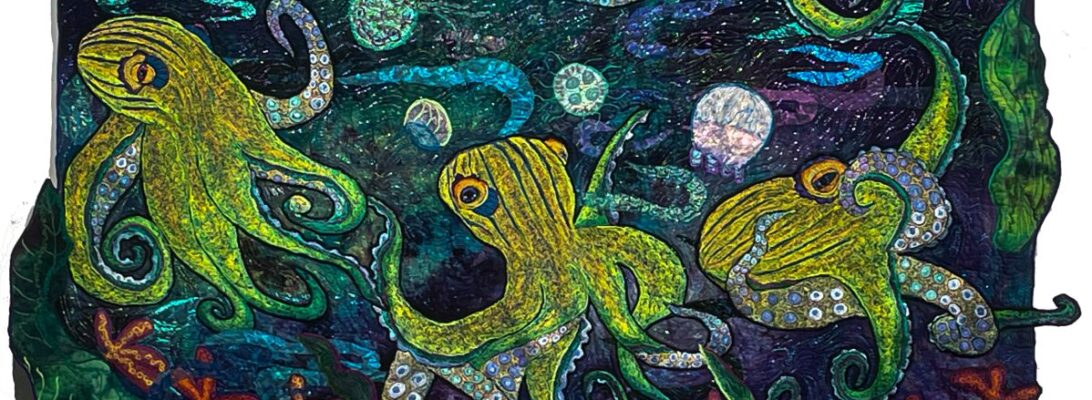A couple of weeks ago, I did a series of small rubbing pieces. I use rubbing plates and oil paint stick. I focused on different backgrounds, flowers, bees, dragonflies and butterflies. It’s an endless river of design choices in a tiny scale.
I’ve loved working with tiny pieces. It’s nice to have a quick result, and they’ve proved to be popular. Who wouldn’t want a delightful piece of art that fits everywhere and doesn’t cost much.
The rubbing plates I’ve been using are a limit of sorts. I still haven’t figured out how to make my own. I will. I want it bad enough, I’ll do it.
But I’ve enjoyed working with these flower plates to stretch what they might be.
But there’s another side. It’s soothing to spend a couple days just stitching. The rhythm of the machine, the movement of design, and the feeling of watch thread flow from the needle to the fabric all create a tao that’s gotten me through endless tough times. Demanding focus to actually color in the lines is very good for me. A lot of my stitching can be mindless. This is not. I have to try to hit the line.

I’m going to show you some of these before and after I’ve stitched them. It’s a magical change that always thrills me.
They are transformed by stitching. They’re lovely, just as fabric rubbings but they change in amazing ways, once they’ve been stitched.

These are supposed to be waterlilies. But with some background and color changes, I think they make fine Dahlias.
These are supposed to be forget me nots.

But I love them as carnations

But there’s another side. It’s a place to explore and work with colors differently and stitches differently. Not endless change, but small differences not tried before. Is there anything I haven’t tried. Of course there is. Move it over a quarter of an inch and add peach, and I’ll bet I’ve never done it before.


I’ll be finishing these little quilts in a day or two, and they’ll go up on the website and onto Etsy for sale. You’ll find tutorials on rubbings and stitching on the video page.
Take time to try things out in little ways or big ones, as your work needs. It feels great to stretch a bit.









































































